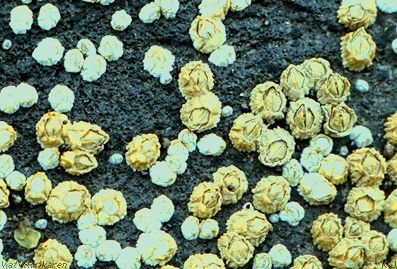|

|
|
When the larva has decided where it will
dwell, it attaches itself to the rock with the help of a glue
like substance from its entenn glands, throws off its larva shell,
twists itself into place so its feet point outwards from the rock and
starts building a new shell. The shell plates are seperated by living
tissue so that growth is accomplished along these seams. For the cirria
and the rest of the body to be to grow, the barnacles must be able to
change parts of their exterior that is not composed of shell plates, which
under ideal circumstances, can be as many as 15 times a year. It is not
uncommon to see large amounts of "barnacle-skin" floating in the water
during the summer. It is not uncommon for the Northern rock barnacle to
be as old as 3 years.

|
Three generations of barnacles. The smallest individuals attach
themselves to the rocks during the spring. On the older individuals,
the years growth can be seen as new white shells.
|
|

|
Page
4 of 7
|

|
|

![]()